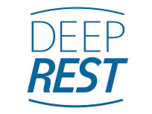
Jozée SARRAZIN, Ifremer
Européen
Biodiversa & Water JPI
Start Date
01/04/2022
End Date
01/04/2025
The deep sea, defined as water and seafloor below 200 meters, is the largest biome on Earth accounting for 92% of the global ocean. This species-rich biome harbours numerous ecosystems including vast abyssal plains, mountain chains and canyons as well as cold-water corals, sponge grounds, hot vents and cold seeps. However, the so far relatively “pristine” deep sea is at potential risk of biodiversity and ecosystem function loss due to anthropogenic activities, including deep-sea mining. Although mineral exploitation of deep-sea resources has not yet started, the International Seabed Authority as part of its mandate defined in the UN Convention of the Law of the Sea is drafting the mining code that shall regulate exploitation in the ocean floor and subsoil thereof, beyond the limits of national jurisdiction. The ISA mandate includes the effective protection of the marine environment from harmful effects that may arise from deep-seabed related activities. DEEP REST aims at developing a novel approach to improve our capacities for science-based spatial planning and management in two ecosystems threatened by deep-sea mining. This project is extremely timely, as it directly addresses the concerns of policy-makers in a moment when seabed mining and its associated regulations are rapidly evolving from exploration to exploitation.
DEEP REST will develop a novel approach to improve our conservation/restoration capacities in two deep-ocean ecosystems threatened by mining: nodule fields and hydrothermal vents. By combining data from large areas and across several disciplines, the project will:
- Investigate and compare the biodiversity, functioning and connectivity of biological communities within and across ecosystems, linking to environmental conditions
- Evaluate the recovery potential and resilience of deep-sea communities at different degrees of disturbance, identify indicators of change and characterize tipping points
- Test, through experimentation, the effectiveness of different restoration actions on the recovery of communities
- Evaluate conservation/restoration outcomes in terms of ecosystem services and identify the governance arrangements needed for efficient actions in concertation with stakeholders
- Provide scientific guidance to stakeholders and policy-makers and recommendations to support deep-sea governance, ensuring a sustainable management of resources and conservation of ecosystems
- Communicate with stakeholders on issues linked to the exploitation of deep mineral resources. The proposed baseline studies are essential to fill knowledge gaps and to better understand the natural dynamics of deep-sea ecosystems, predict their resilience and evaluate potential conservation/restoration actions. Only with fundamental knowledge will we be able to propose relevant hypotheses concerning recovery trajectories and restoration actions needed.
The AMURE team involved in DEEP-REST leads the Work Package 5 “Ecosystem services, governance & geopolitical dimensions” and Work Package 6 “Capacity building, stakeholder engagement & policy recommendations”.
———————————————————————————————————————
Le projet DEEP-REST étudie la conservation et la restauration des écosystèmes des grands fonds marins dans un contexte d’exploitation minière. L’ambition du projet DEEP-REST est de répondre directement aux préoccupations des décideurs politiques à un moment où les activités minières des fonds marins et les réglementations associées se préparent à passer de l’exploration à l’exploitation, alors même que les connaissances fondamentales sur la biodiversité associée aux écosystèmes des grands fonds, leur fonctionnement et les services qu’ils fournissent sont très limitées. Le projet portera en particulier sur les champs de nodules de l’océan Pacifique ainsi que sur les champs hydrothermaux des océans Atlantique et Arctique. DEEP-REST entend clarifier les questions fondamentales liées à l’identification des zones à prioriser pour la conservation, celles qui peuvent être exploitées avec un minimum de dommages (si elles existent) et celles qui sont les plus appropriées comme zones de référence pour évaluer les impacts de l’exploitation minière. En outre, une approche transdisciplinaire, associant interdisciplinarité et engagement des acteurs, sera mise en œuvre afin de développer et comparer différentes stratégies de conservation et de restauration.
Site(s)/Zone(s) d’étude :
- Les champs hydrothermaux des océans Atlantique et Arctique
- Les champs de nodules de la zone de Clarion-Clipperton dans le Pacifique







